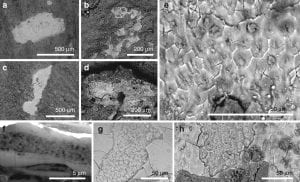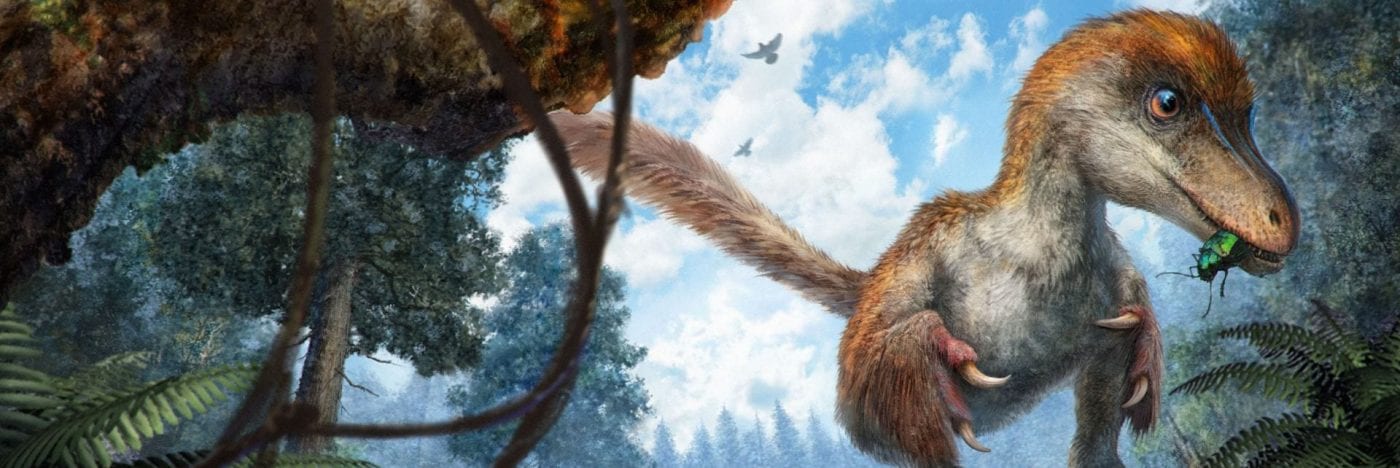Dinosaur behaviour
The new finds of colour in dinosaurs, and especially the fact that the coloured feathers were often marked by sharply-defined patterns of spots and stripes, just like certain modern birds, suggests they may have had a key function in display. When the first studies were made (Li et al. 2010; Zhang et al. 2010), both temas independently noted this as a consequence. So, feathers were not only for insulation in these dinosaurs, but also for display, perhaps because feathers can carry bright and sharply demarcated colour patterns, but the display can be enhanced because the feathers can be rustled and even raised – think of how male peacocks and lyrebirds expand and promote their coloured tails.
If this is so, then it suggests that at least the coelurosaur theropods, which had pennaceous feathers, may have been subject to sexual selection. It is often suggested that a key reason there are so many species of birds (over 10,000 species today) is that they are visual creatures and species split as a result of sexual selection. Strip a bird of its feathers, and many share similar skeletons, but their particular colourful adornments set the species apart. The usual model for sexual selection is that females watch the males showing off, and select the male with the best feathers or the best dance – this supposedly indicates he is strong and so likely to be a good biological father.
Could this suggest why there seem to have been unusually huge numbers of small theropod dinosaurs in some Jurassic and Cretaceous locations. Normally, there are fewer predatory species in a typical assemblage than herbivores – it’s a reflection of who eats whom, and the shape of the ‘food pyramid’ – lots of prey at the bottom, and fewer predators feeding on them. Dinosaur palaeobiologists have been accused of being over-optimistic and naming far too many theropod species – maybe though some theropods at least were subject to sexual selection and so species numbers rose as the colours and dances diverged.
Dinosaur dandruff
Do the feathers and skin of dinosaurs tell us anything about their physiology? The feathers of course tell us the dinosaurs and birds were endothermic (= warm-blooded) because feathers over the body provide insulation. But it takes some remarkable changes in the skin to enable feathers to sprout from their follicles. Until recently, a great deal had been learned about feather evolution, but less was known about the evolution of the skin.
Then came a report of dinosaur dandruff. McNamara et al. (2018) reported the discovery of fossil skin, preserved with remarkable nanoscale fidelity, in three non-avian maniraptoran dinosaurs and a basal bird from the Cretaceous Jehol biota (China). The skin comprises patches of desquamating epidermal corneocytes that preserve a cytoskeletal array of helically coiled α-keratin tonofibrils. This structure confirms that basal birds and non-avian dinosaurs shed small epidermal flakes as in modern mammals and birds, but structural differences imply that these Cretaceous taxa had lower body heat production than modern birds. Feathered epidermis acquired many, but not all, anatomically modern attributes close to the base of the Maniraptora by the Middle Jurassic.
 [Left] Phosphatised soft tissues in non-avian maniraptoran dinosaurs and a basal bird. a–h Backscatter electron images of tissue in Confuciusornis (IVPP V 13171; a, e, f), Beipiaosaurus (IVPP V STM31-1; b, g), Sinornithosaurus (IVPP V 12811; c, h) and Microraptor (IVPP V 17972A; d). a–d Small irregularly shaped patches of tissue. e Detail of tissue surface showing polygonal texture. f Focused ion beam-milled vertical section through the soft tissue showing internal fibrous layer separating two structureless layers. g, h Fractured oblique section through the soft tissues, showing the layers visible in f.
[Left] Phosphatised soft tissues in non-avian maniraptoran dinosaurs and a basal bird. a–h Backscatter electron images of tissue in Confuciusornis (IVPP V 13171; a, e, f), Beipiaosaurus (IVPP V STM31-1; b, g), Sinornithosaurus (IVPP V 12811; c, h) and Microraptor (IVPP V 17972A; d). a–d Small irregularly shaped patches of tissue. e Detail of tissue surface showing polygonal texture. f Focused ion beam-milled vertical section through the soft tissue showing internal fibrous layer separating two structureless layers. g, h Fractured oblique section through the soft tissues, showing the layers visible in f.
Dandruff is essential in mammals and birds so skin can be shed and renewed by breaking out from between the hair or feathers. In reptiles without hair or feathers, the whole outer surface of the skin can be shed in sheets rather than small flakes. The size of the dandruff flakes reflects the spacing between feathers or hair.
In modern birds, corneocyte tonofibrils are dispersed loosely among intracellular lipids, which facilitates evaporative cooling in response to heat production during flight and insulation by plumage. In contrast, the fossil tonofibrils are densely packed and fill the cell interior. This high density of tonofilaments in the fossil corneocytes reflects originally higher densities than in modern birds. The fossil birds are thus likely to have had a lower requirement for evaporative cooling and, in turn, lower body heat production related to flight activity than in modern birds. So the feathered dinosaurs and early birds in this study were clearly endothermic, but not to such a high level as modern birds.
References
- Li, Q., Gao, K.-q., Vinther, J., Shawkey, M.D., Clarke, J.A., D’Alba, L., Meng, Q., Briggs, D. E. G., Miao, L., and Prum, R.O. 2010. Plumage color patterns of an extinct dinosaur. Science 327, 1369-1372.
- McNamara, M.E., Zhang, F., Kearns, S.L., Orr, P.J., Toulouse, A., Foley, T., Hone, D.W.E., Rogers, C.S., Benton, M.J., Johnson, D., Xu, X., Zhou, Z. 2018. Fossilized skin reveals coevolution with feathers and metabolism in feathered dinosaurs and early birds. Nature Communications 9, 2072. Download the paper here and the Supplementary file.
- Zhang, F., Kearns, S.L, Orr, P.J., Benton, M.J., Zhou, Z., Johnson, D., Xu, X., and Wang, X. 2010. Fossilized melanosomes and the colour of Cretaceous dinosaurs and birds. Nature 463, 1075-1078. Download the paper here and the Supplementary data.

